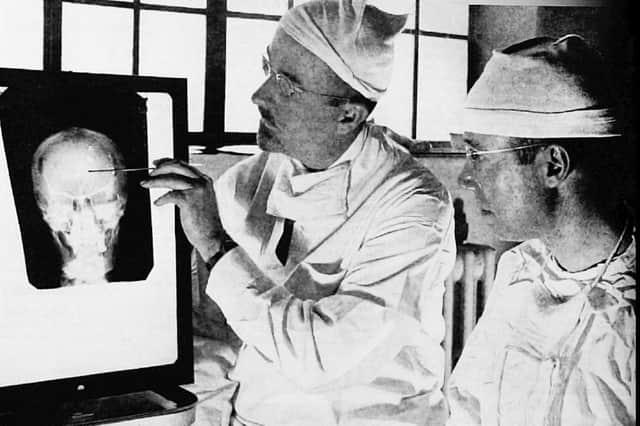This is one of the most evil men in the world | Steve Canavan


‘Interesting,’ said the librarian, a middle-aged woman who smelt like she’d spilt a full bottle of perfume over her entire body. The scent was so strong my eyes started to water and I had to smother my face with a handkerchief (that’s a lie, it was a torn-off sheet of kitchen roll).
‘Are you studying the topic?’ she inquired as she scanned the book cover.
Advertisement
Hide AdAdvertisement
Hide Ad‘Erm, no,’ I replied, ‘I’m just after some bedtime reading.’
‘About lobotomies? Really?’ she asked, suddenly concerned.
‘Erm, yes, really,’ I said, stifling a cough as a waft of her fragrance caught the back of my throat.
‘Each to their own’, she muttered.
When I’d had a short lie-down to rid myself of the migraine bought on by her aroma, I began reading.
Broadly speaking, I knew what a lobotomy was: an operation that back in the day was used to treat people with a mental illness (by severing the connections to the brain’s prefrontal lobe; ooh, get me). But what I didn’t know was how horrific the actual procedure was and how popular it became in such a short space of time.
Advertisement
Hide AdAdvertisement
Hide AdThe most notorious lobotomist was a US psychiatrist called Walter Freeman, who decided it was too much of a faff doing them with proper medical equipment in a proper operating theatre.
So what he did was devise a new method which involved lifting the upper eyelid of his patient and inserting an ice pick into the top of the eye socket. Once inserted into the eye socket, Freeman used a mallet to hammer the pick through a thin layer of bone and into the brain, then – from what I can gather – simply wiggled it about a bit.
The best (and by best I mean worst) part about this was that Freeman had no formal medical training, yet drove around America in a van performing his ice-pick lobotomies at various mental institutions.
In the 1940s and 50s, Freeman and his fellow lobotomy surgeons across the world became famous and the numbers of people having the op soared (in 1944, 684 lobotomies had been performed in the US; by 1951 the figure was 19,000).
Advertisement
Hide AdAdvertisement
Hide AdThis is because it achieved what the authorities wanted – mentally ill patients with violent tendencies became, surprise surprise, a lot calmer. Unfortunately, they also lost nearly all their personality and were often left listless and non-entities.
Freeman, unbelievably, seemed quite content with this. He called the procedure ‘surgically induced childhood’.
Things often went wrong. For example, after he inserted an ice pick into the eye socket of then 23-year-old Rosemary Kennedy (younger sister of John F Kennedy), who suffered from seizures and violent mood swings, she was left permanently incapacitated.
Crazier still, the procedure started to become a badge of fashion, when people with no mental illness decided to have a lobotomy because they thought it would make them think clearer and be calmer. The New York Times described it as ‘surgery for the soul’.
Advertisement
Hide AdAdvertisement
Hide AdThe Russians, to their credit, banned lobotomies in 1950, which is admirable, though a little ironic given mass-murderer Joseph Stalin was still in power.
Not until seven years later did the US follow suit. After Freeman gave a long-time patient a third lobotomy, she developed a brain haemorrhage and died – which prompted the American authorities to ban it too.
In a nutshell the moral is if anyone approaches you carrying an ice pick and a mallet and asks to lift your eyelid up, run in the opposite direction.